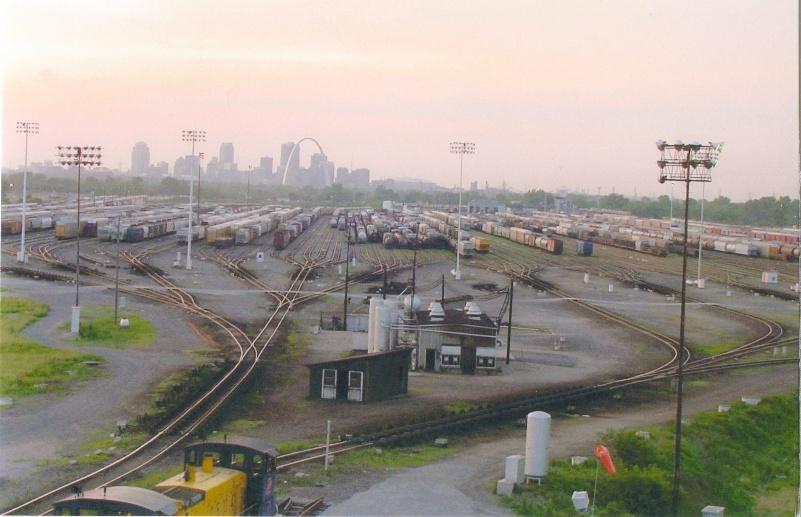
The railroad cancer lawyers at Doran and Murphy have seen it all over the last 30 years. We have filed asbestos cancer lawsuits, diesel cancer lawsuits, silica (from locomotive sanders and ballast) cancer lawsuits, welding fume cancer lawsuits and lawsuits for all different types of cancer caused by railroad exposures. One often overlooked exposure involves benzene. Most railroad workers never knew they were exposed to benzene every day they worked around diesel exhaust, or that it has been linked to many different types of cancer.
What is benzene?
According to the American Cancer Society (ACS), benzene is “one of the 20 most widely used chemicals in the United States. It is used mainly to make other chemicals, including plastics, resins, lubricants, rubbers, dyes, detergents, drugs, and pesticides. In the past, it was also commonly used as an industrial solvent (a substance that can dissolve or extract other substances) and as a gasoline additive…Benzene is also a natural part of crude oil and gasoline (and therefore motor vehicle exhaust).”
Where is benzene found in railroad yards?
Everywhere! Because benzene is a component in diesel exhaust, it is present everywhere in railroad yards. According to the World Health Organization (WHO) and International Agency for the Research of Cancer (IARC), benzene “is a volatile and ubiquitous air pollutant, mainly arising from anthropogenic sources such as combustion processes. It is found in crude oil and hence in petroleum products.” Diesel-powered locomotives are a constant source of benzene exposure. Improperly maintained diesel locomotives will emit even more diesel exhaust, and therefore benzene, which increases the hazardous exposures of engineers, conductors, shop workers, carmen and any other rail workers found in railroad yards. These workers knew they were breathing in diesel exhaust and that “it was just part of the job.” What they didn’t know was that this diesel exhaust contained dozens of different cancer-causing substances, including benzene. In addition to benzene exposure from diesel exhaust fumes, railroad workers were often exposed to benzene-containing chemicals and degreasers, such as those used in parts cleaners.
How are railroad workers exposed to benzene?
According to IARC, “occupational exposure to benzene mainly occurs via inhalation. Benzene also penetrates skin, but the degree of dermal absorption of benzene will depend upon the exposure scenario. Dermal absorption will vary according to the tasks being performed (e.g., dipping machinery parts, immersion of hands, or using petroleum-based products as degreasing agents), the benzene content of the product, the composition of the product containing benzene, contact time, and the area of the body on which the chemical resides.” For railroad workers who were around diesel exhaust on a regular, ongoing basis, this meant increased inhalation exposures. Similarly, railroad workers who were tasked with cleaning locomotive parts with solvents and degreasers which contained benzene, could breathe in the benzene fumes (inhalation exposure) and also had exposure whenever the degreasers came in contact with their skin (dermal exposure).
What are the health hazards associated with benzene?
The U.S. Centers for Disease Control (CDC) and Department of Health and Human Services (DHHS) have both concluded that benzene causes cancer. Exposure can cause various types of blood cancers, including Acute Myeloid Leukemia (AML), Myelodysplasia Syndrome (MDS), Chronic Myeloid Leukemia (CML), and Chronic Lymphocytic Leukemia (CLL). In addition, many studies have found an association between benzene and lung cancer, as well as bladder cancer.
Cancer is a “dose-dependent disease”– the more exposure, the more likely someone is to develop cancer. Many American companies use the Threshold Limit Values (TLV) published by the American Conference of Governmental Hygienists (ACGIH) when it comes to levels of exposure for workers. In 2024, the ACGIH lowered the TLV from .5 parts per million (ppm) to .02 ppm. This change reflects a new limit which is 25-times lower than the old standard! It was made on account of the many new studies that were being published showing that low-level benzene exposure was capable of causing cancer and death in workers. In fact, according to the WHO and IARC, “there is no safe level of exposure to benzene.” Even if you smoked cigarettes (which also contain benzene), any benzene exposure at the railroad would only serve to increase the “dose” and the likelihood of getting cancer.
If you have cancer and worked for the railroad, don’t just assume it was “bad luck” or from smoking cigarettes. Benzene is often overlooked by doctors and lawyers when investigating which exposures are responsible for causing cancer in railroad workers. Call or contact the railroad benzene lawyers at Doran and Murphy for a free consultation today at 1-800-374-2144!





